<< Previous | Displaying results 4951-4975 of 6769 for "" | Next >>
Romani (Gypsy) women boil laundry and hang it to dry in the middle of the camp at Marzahn. Germany, June 1936. Shortly before the opening of the 1936 Olympic Games in Berlin, the police ordered the arrest and forcible relocation of all Roma in Greater Berlin to Marzahn, an open field located near a cemetery and sewage dump in eastern Berlin. Police surrounded all Romani encampments and transported the inhabitants and their wagons to Marzahn.
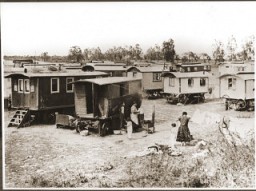
A man works outside his family's dwelling in a Roma (Gypsy) encampment in the city of Haarlem. The Netherlands, October–November 1940.
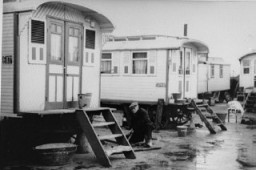
Romani (Gypsy) women march to work in the Lackenbach internment camp. Lackenbach, Austria, 1940-1941.
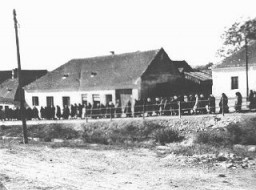
A group of Romani (Gypsy) prisoners in Belzec labor camp, 1940. The Belzec labor camp and its subsidiaries were dismantled at the end of 1940.
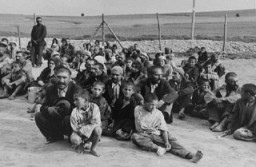
German police guard a group of Roma (Gypsies) who have been rounded up for deportation to Poland. Germany, 1940–45.
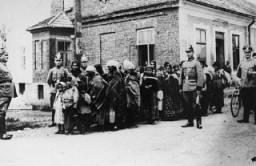
Romani (Gypsy) children play outside at the Jargeau internment camp. The camp was established in response to a German order in October 1940 calling for the arrest and confinement in camps of all Frenchmen or foreigners in the Loiret region who did not have a permanent residence. Jargeau, France, 1941–45. Conditions in the camp were extremely poor and the lack of sanitation facilities led to the periodic outbreak of epidemics.
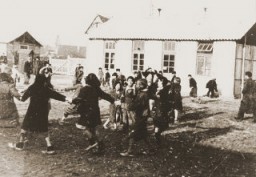
Roma (Gypsies) remove bodies from the Iasi-Calarasi death train during its stop in Tirgu-Frumos. Two trains left Iasi on June 30, 1941, bearing survivors of the pogrom that took place in Iasi on June 28-29. Hundreds of Jews died on the transports aboard crowded, unventilated freight cars in the heat of summer. Romania, July 1, 1941.
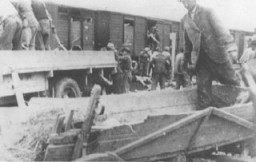
A Serbian gendarme serving the Serbian puppet government led by Milan Nedić escorts a group of Roma (Gypsies) to their execution. Yugoslavia, ca. 1941–1943.
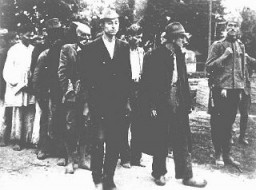
View of the entrance to the "Gypsy camp" on Brzezinska Street in the Lodz ghetto in occupied Poland. Photograph taken in 1942.
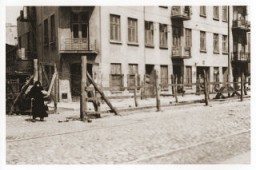
German naval officer Martin Niemöller (top, foreground) commands a U-Boat during World War I. Flensburg, Germany , ca. 1914–17.

Pastor Martin Niemöller at his desk in his home. Berlin, Germany, ca. 1936.
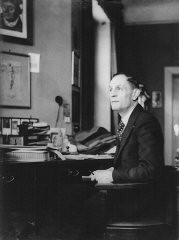
Quotation from Martin Niemöller on display in the Permanent Exhibition of the United States Holocaust Memorial Museum. Niemöller was a Lutheran minister and early Nazi supporter who was later imprisoned in the camp system for opposing Hitler's regime. First they came for the Socialists, and I did not speak out-Because I was not a Socialist.Then they came for the Trade Unionists, and I did not speak out-Because I was not a Trade Unionist.Then they came for the Jews, and I did not speak out-Because I was…
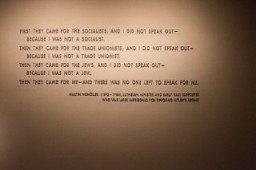
A visitor stands in front of the quotation from Martin Niemöller that is on display in the Permanent Exhibition of the United States Holocaust Memorial Museum. Niemöller was a Lutheran minister and early Nazi supporter who was later imprisoned for opposing Hitler's regime.
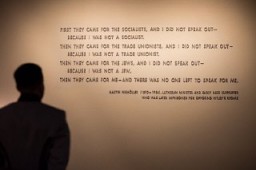
Visitors stand in front of the quotation from Martin Niemöller that is on display in the Permanent Exhibition of the United States Holocaust Memorial Museum. Niemöller was a Lutheran minister and early Nazi supporter who was later imprisoned for opposing Hitler's regime.
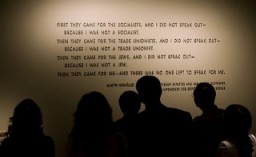
SS General Reinhard Heydrich in his office during his tenure as Bavarian police chief. Munich, Germany, April 11, 1934.
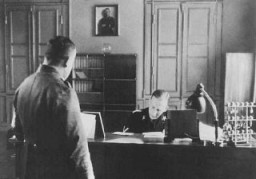
Reinhard Heydrich (right) and his deputy, Karl Hermann Frank (center), stand at attention during Heydrich's inauguration as governor of the Protectorate of Bohemia and Moravia. Prague, September 1941.
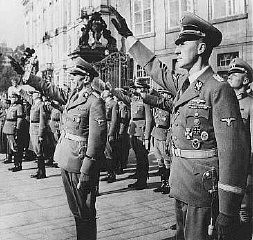
The damaged car of SS General Reinhard Heydrich after an attack by Czech agents working for the British. Prague, Czechoslovakia, May 27, 1942.
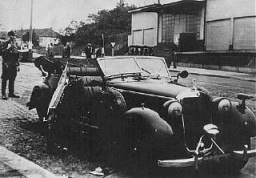
SS chief Heinrich Himmler (right) during a visit to the Auschwitz camp. Poland, July 18, 1942.
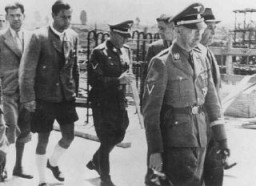
SS chief Heinrich Himmler (front row, left) and Mauthausen commandant Franz Ziereis (second from left) inspect inspect the Wiener Graben quarry during an official tour of the Mauthausen concentration camp. Austria, April 27, 1941.
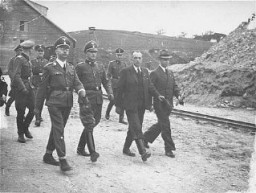
SS chief Heinrich Himmler reviews a unit of SS-police in Krakow, Poland, March 13, 1942.
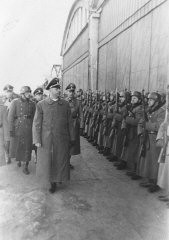
SS chief Heinrich Himmler addresses a group of soldiers in a cavalry regiment of the Waffen SS in the eastern territories. 1942.
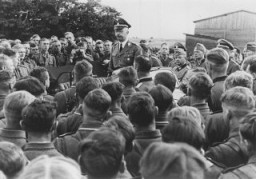
Heinrich Himmler, head of the SS, speaks to an inmate of the Dachau concentration camp during an official inspection. Dachau, Germany, May 8, 1936.
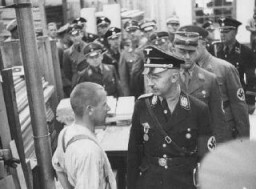
A collection of valises belonging to Jews who were deported to killing centers. These valises are displayed at the base of the railcar on the third floor of the Permanent Exhibition at the United States Holocaust Memorial Museum. Washington, DC, 1993–1995.
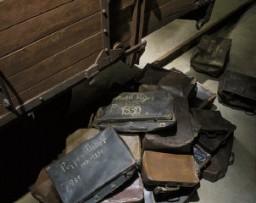
View of the photo mural of a selection at Auschwitz-Birkenau taken through the open railcar on the third floor of the Permanent Exhibition at the United States Holocaust Memorial Museum. Washington, DC, 1993–95.
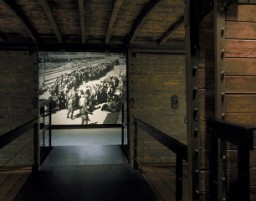
A pedestrian reads a notice announcing an upcoming public meeting, scheduled for Tuesday, December 3, to urge Americans to boycott the upcoming 1936 Berlin Olympics. New York, United States, 1935.
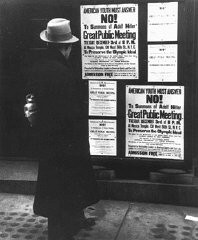
We would like to thank Crown Family Philanthropies, Abe and Ida Cooper Foundation, the Claims Conference, EVZ, and BMF for supporting the ongoing work to create content and resources for the Holocaust Encyclopedia. View the list of donor acknowledgement.